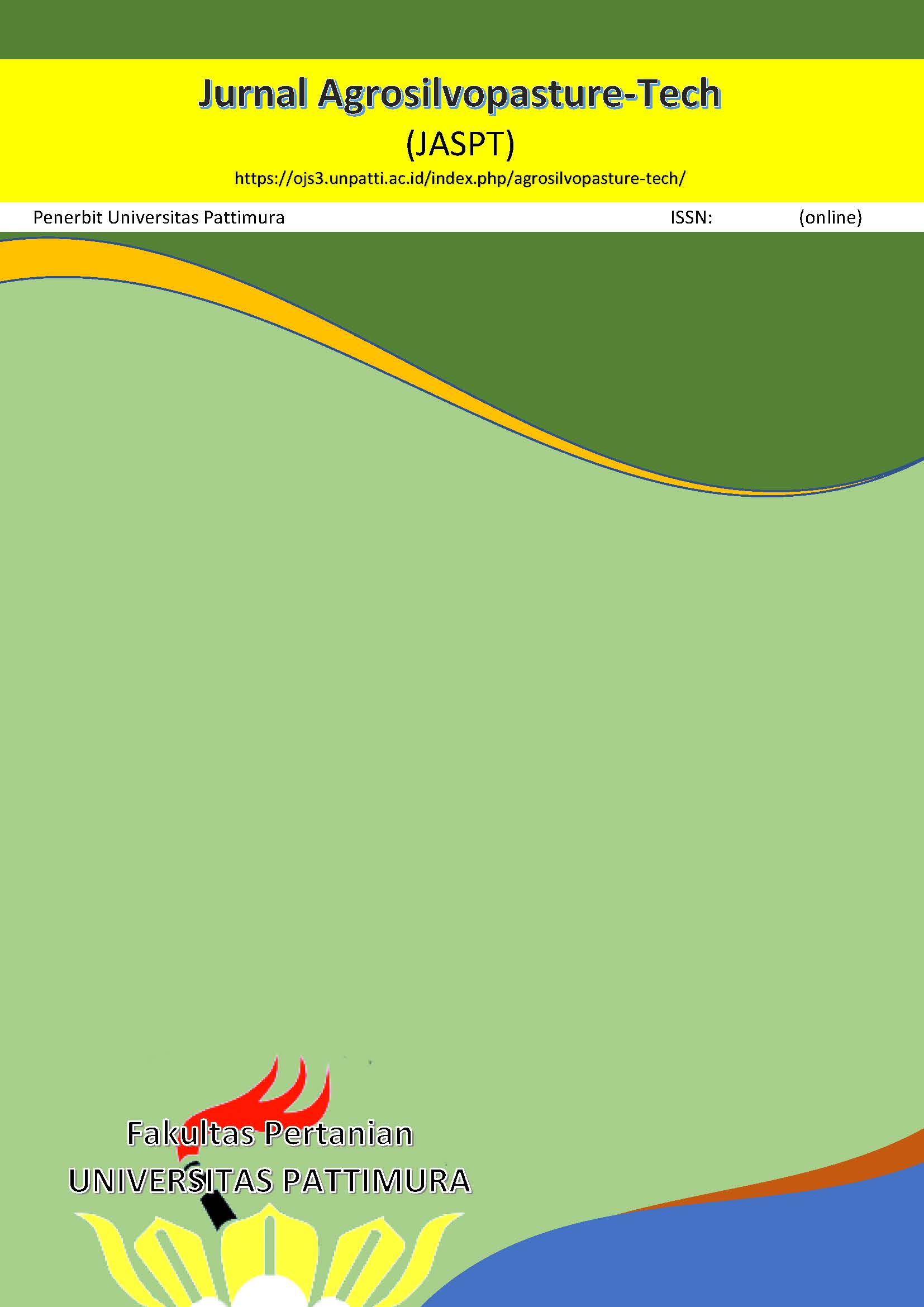Pengaruh Konsentrasi CMC (Carboxy Methyl Cellulose) Terhadap Karakteristik Fisikokimia Dan Organoleptik Jelly Drink Air Kelapa Muda
The Effect Of CMC (Carboxy Methyl Cellulose) Concetration On The Phycochemical And Organoleptik Characteristics Of Young Coconut Water Jelly Drink
Abstract
Coconut is a type of palm plant that grows widely in tropical countries, including Indonesia, and all parts of this plant can be used, one of which is coconut water. Jelly drink is a type of drink made from fruit-based ingredients, which makes it popular with people of all ages because it is made from fruit-based ingredients, which can be healthy and improve nutrition. This research is to determine the right CMC concentration and produce Jelly Drink young coconut water with the best physicochemical and organoleptic characteristics. This research uses RAL with one factor, namely CMC concentration, with four levels of concentration treatment: P1 = 0.25%, P2 = 0.5%, P3 = 0.75%, and P4 = 1%. The results of the research with the addition of a CMC concentration of 0.25% were the best treatment in making Jelly Drink with characteristics of vitamin C of 0.45 mg/100g, pH of 4.70, 1.20%, total acid of 7.33, total dissolved solids of 33, 00°Brix, and the organoleptic characteristics are clear, coconut flavored, slightly chewy, slightly difficult to smoke, and overall liked by the panelists.
Downloads
References
Andriani, D. (2008). No TitleFormulasi Sari Buah Jeruk Pontianak (Citrus nobilis var. microcarpa) dengan Metode Lye Peeling Sebagai Upaya Penghilangan Rasa Pahit Pada Sari Buah Jeruk.
Astawan, M. (2007). Nata De Coco. Departemen Teknologi Pangan dan Gizi. IPB, Bogor.
Farikha, I.N., Anam, C., & Widowati, E. (2013). Pengaruh jenis dan konsentrasi bahan penstabil alami terhadap karakteristik fisikokimia sari buah naga merah (Hylocereus polyrhizus) selama penyimpanan. Jurnal Teknosains Pangan, 2(1).
Karina, A. (2008). Pemanfaatan Jahe (Zingiber officinale Rosc.) dan Teh Hijau (Camelia sinensis) dalam Pembuatan Selai Rendah Kalori Dan Sumber Antioksidan. Skripsi. Fakultas Ekologi Manusia. Universitas IPB.
Prasetyo. (2002). Air Kelapa Muda sebagai Minuman Isotonik Alami. UI Press, Jakarta.
Silfia. (2011). Pengaruh Penambahan Tepung Tempe Terhadap Mutu Kecap Air Kelapa The Effect of Tempe Flour Addition to the Quality of Coconut Water Sauce Silfia. Jurnal Litbang Industri, 1, 22–29Palijama, S., Tetelepta, G., & Picauly, P. (2023). Jelly drink buah dari buah galoba yang menggunakan CMC sebagai pembentuk gel. Jurnal Agrosilvopasture-Tech, 2(1) (2023) 226-232.
Latukau, K., Augustyn, G. H., & Palijama, S. (2022). Chemical Characteristics of Pineapple Jelly Drink (Ananas comosus) With the Addition of Carboxyl Methyl Cellulose. Jurnal Agrosilvopasture-Tech, 1(1), 10–15. https://doi.org/10.30598/j.agrosilvopasture-tech.2022.1.1.10
Megavitry, R., Laga, A., Syarifuddin, A., & Widodo, S. (2019). Pengaruh suhu gelatinisasi dan waktu sakarifikasi terhadap produksi sirup glukosa sagu. In Prosiding Seminar Nasional Sinergitas Multidisiplin Ilmu Pengetahuan dan Teknologi, 2, 125-128.
Siskawardani, D., Komar, N., & Hermanto, M. (2013). Pengaruh Konsentrasi Na-CMC (Natrium– Carboxymethyle Cellulose) dan Lama Sentrifugasi Terhadap Sifat Fisik Kimia Minuman Asam Sari Tebu (Saccharum officinarum L). Jurnal Bioproses Komoditas Tropis, 1(1).
Suyuti, A., Su’i, M., & Sudiyono, S. (2018). Pengaruh kosentrasi CMC dan lama pemanasan terhadap sifat fisik dan kimia (likopen) sari buah tomat. Agrika, 12(1), 50-60.
Yulianti, R. (2008). Pembuatan minuman jeli daun kelor (Moringa oleifera Lamk) sebagai sumber vitamin C dan β-karoten. Skripsi. Institut Pertanian Bogor. Bogor.
Copyright (c) 2024 The Author(s)

This work is licensed under a Creative Commons Attribution-ShareAlike 4.0 International License.




.png)

